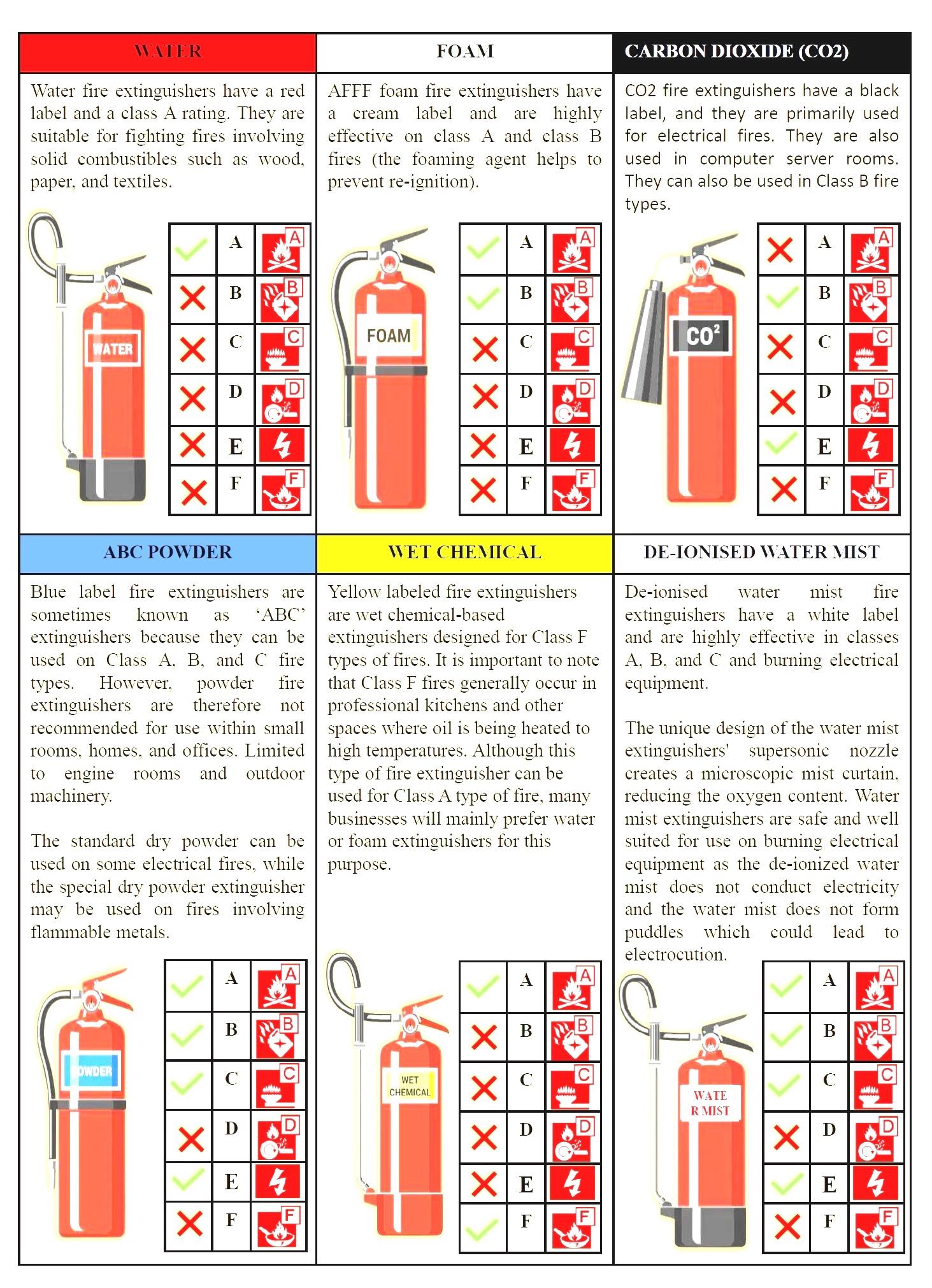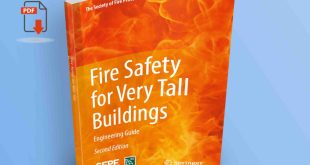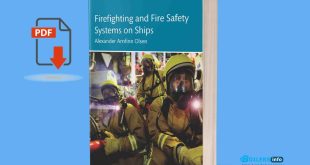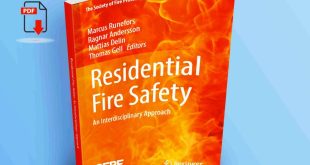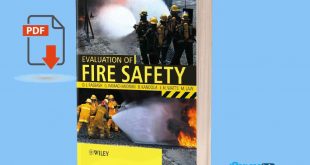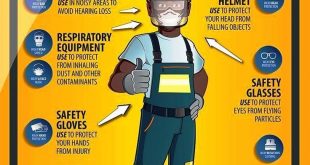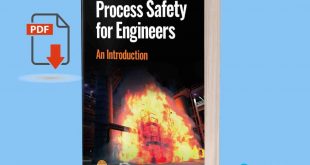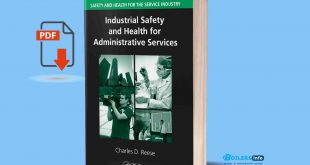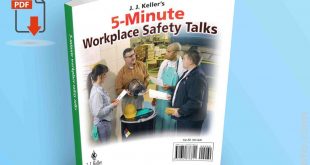Almost all fires are small in their incipient stage and can be put out quickly in the hands of a trained person, portable fire extinguishers are great tools to protect people and property from fire during the early stages if the proper firefighting equipment is available. When using an extinguisher or selecting an extinguisher to install it’s important to know the characteristics of different fire extinguishers. This post will address the different types of fire extinguishers by breaking them down by their extinguishing agent, Which is the material inside the extinguisher that gets applied to the fire. Fire Safety Books.
The fire triangle is a simple model for understanding the necessary ingredients for most fires. A fire can be prevented or extinguished by removing any one of the fire triangle elements. This is The Fire Triangle. Actually. it’s a tetrahedron. because there are four elements that must be present for a fire to exist.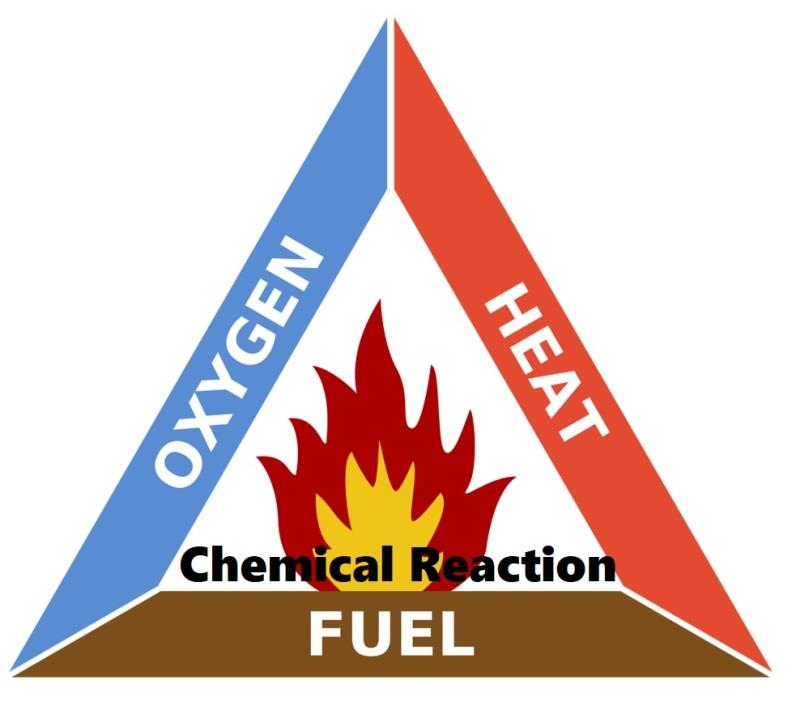
- Oxygen to sustain combustion
- Heat to raise the material to its ignition temperature
- Fuel to support the combustion
- The chemical reaction between the other three elements
Remove any one of these four elements to extinguish the fire.
The concept of Fire Protection is based on keeping these four elements separate. Fire extinction is achieved by the removal of either fuel. oxygen, heat. or by the intem1ption of the chain reaction.
The Parts of a Fire Extinguisher:
While there are many different types of fire extinguisher-s – water. city chemical. foam. clean agent. etc. for the most part. they have the same or very similar parts with which to operate them. In general. regardless of the class of extinguisher and the type of extinguishing agent, they may contau1. you can expect a fire extinguisher to have a
- Cylindrical Tank.
- Valve.
- Cany Handle.
- Operating Lever.
- Pull Pin.
- Tamper Seal.
- Pressure Gauge.
- Discharge Hose.
- Discharge Nozzle.
Extinguishing Agent and Propellant.

Cylindrical Tank: The fire extinguisher serves to store extinguishing materials and propellants. These tanks are generally made of strong steel and, although sn1all, they are very heavy. The tube is the main part of storing the extinguishing formula. In addition, there is also a part of the fire extinguisher that has the function of removing the extinguishing agent known as the valve assembly.
Valve:
Serves to control (close and open) the flow of contents in the tube. Valve functions in Fire extinguishers are so important, that they must use high-quality valves.
Carry Handle:
Helps us cany fire extinguishers with ease.
Operation lever:
Depressible part to operate the extinguishing device. This part cannot be operated if the pin has not been pulled.
Pull pins:
We can call them locks, n1etal pins function to prevent accidental release.
Damage seal:
A plastic seal is affixed to keep the pulling pin from being damaged when the fire extinguisher is dropped or hit.
Pressure gauge:
An instrument for measuring pressure is whether the fire extinguisher has enough pressure to put out a fire. If the arrow is green, it means that the ingredients have been tilled correctly. If the gauge is on the left, the load is under load, if the gauge on the right is green then overload and risk of explosion.
Drain hose:
The hose that serves to drain the contents and sources of ignition
Drain nozzle:
The tip of the hose is conical to allow the expelled substance to spread
In addition to the core parts above, there are also additional parts of the fire extinguisher that have an equally important function. Here are among them:
1. Instruction label: Instruction label and instructions for use.
2. Monthly inspection sheet: Allows assigned individuals to check APAR eligibility.
3. Annual inspection tag: Just like the monthly inspection sheet, it is annual.
Each part of a fire extinguisher has a function that is interconnected to work effectively. Extinguishing materials that are in the tube, must be controlled and can be used optimally to extinguish the tire efficiently and quickly.
Choosing fire extinguisher types for the relevant class of fire could literally be the difference between life and death. No single extinguisher can be used to tackle every fire, and because each type of fire extinguisher has different classes of tire on which it is effective.
Classes of fire:
Class A, combustible carbon-based solids e.g. paper, wood, or textiles
Class B, flammable liquids e.g. paraffin, petrol, diesel, or oil (but not cooking oil)
Class C, flammable gases, e.g. butane, propane, or methane
Class D, bun1ing metals, e.g. aluminum, lithium, or magnesium
Fires are caused by electrical equipment (indicated by an electric spark symbol and not the letter E) Class F, fats, and cooking oils.
Each of the different types of fire extinguishers is suitable for different tire classes. It is important that you purchase the right fire extinguisher for your needs:
Elide Fire Ball, Self Activation Fire Extinguisher
Fire extinguisher use
Portable Fire Extinguishers and Fire Blankets are designed as First Aid Fire Fighting Equipment. Fire extinguishers should ideally only be used by someone who has been trained to do so -and the following text does not count as training. Moreover, a fire extinguisher should only be activated once the fire alan11 has been triggered and you have identified a safe evacuation route. Evacuate the building immediately if you still feel unsure about using a fire extinguisher or if doing so is clearly the safest option.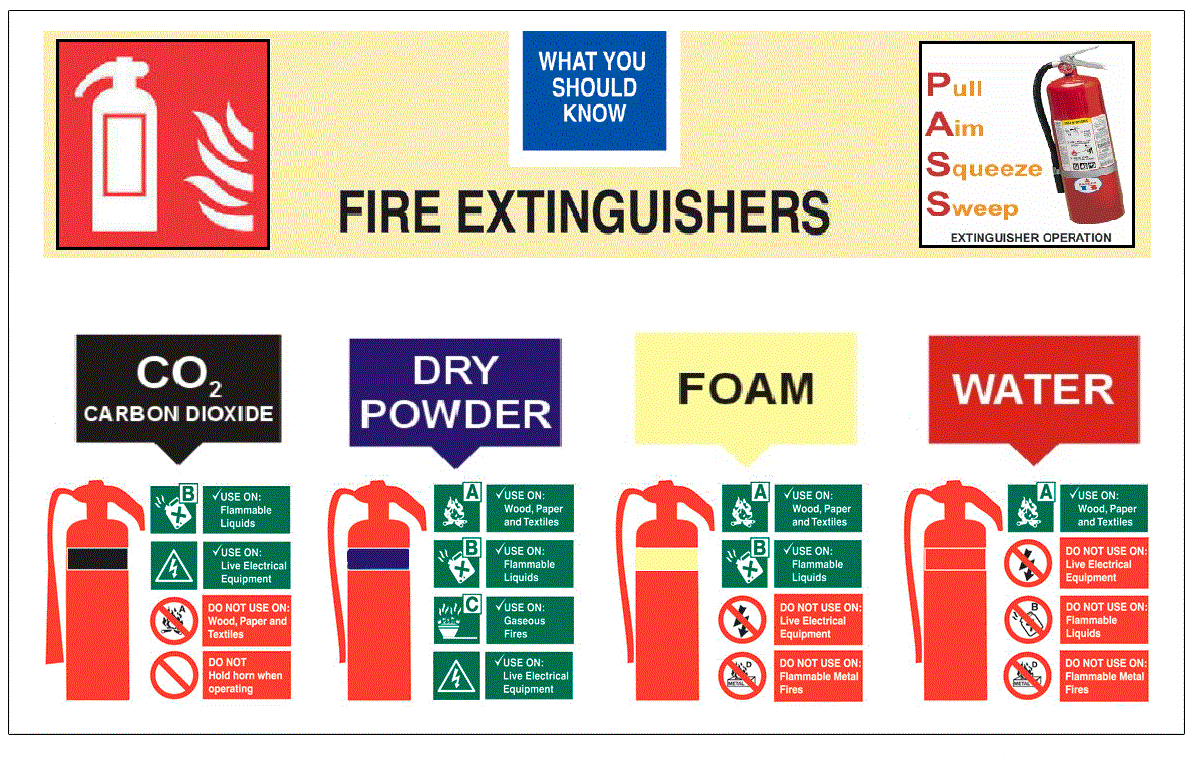
You should not spend more than ten seconds taking control of a fire. Do not put yourself or others at risk and always keep your means of escape behind you when tackling a small tire.
The following four-step technique can be memorized more easily with the acronym PASS:
1. Pull: Pull the pin to break the tamper seal.
2. Aim: Aim low, pointing the nozzle or hose at the base of the fire. (Do not touch the horn on a C02 extinguisher since it becomes very cold and can damage the skin.
3. Squeeze: Squeeze the handle to release the extinguishing agent.
4. Sweep: Sweep from side to side at the base of the tire- the fuel source- until the fire is extinguished.
Important Fire safety Books Get Free your free copy
 Boilersinfo Boiler and Mechanical Power Digital Library
Boilersinfo Boiler and Mechanical Power Digital Library
